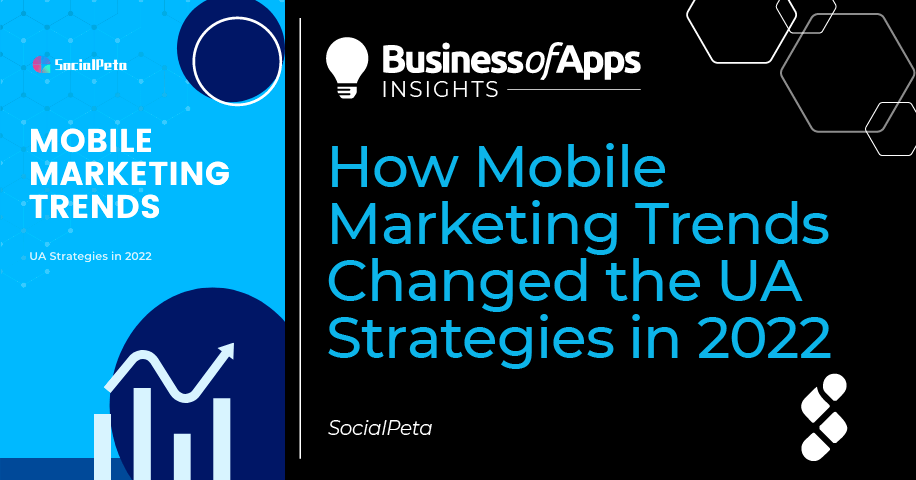According to a recent report by Statista, the number of smartphone users worldwide increased from 5.623 billion in 2019 to 6.259 billion in 2021 and is expected to grow to 7.690 in 2026, representing a 88% increase in just three years.
Smartphone Users Worldwide

Source: Statista
With so many digital touchpoints available, mobile marketing has presented marketers with the opportunity to connect and engage with their customers more than ever before, meeting them where they are and becoming an active part of their conversations.
As user behaviors change, so should user acquisition strategies. But before we consider the evolution of UA strategies, let’s first have a look at the changes that we have experienced in detail.
Changes in the mobile marketing industry in 2021
The COVID-19 pandemic
The pandemic affected all aspects of our lives – the way we work, socialize, study, and communicate has all changed due to COVID-19. As a result, we’re using more apps and spending more time on our phones.
Not just that, apps are increasingly being used for everything from business meetings to recreational activities and more. At the same time, consumer spending on apps reached a new high with $142 billion, which represents a 28% increase compared to 2020.
Before COVID-19, the difference in ad revenue generated by mobile apps between weekends and weekdays was high. People had more free time to be on their phones on the weekends.
However, when the pandemic started, this gap decreased significantly. Most end-users were spending more time indoors and, as a result, more time on their mobile devices. This effect has persisted since and has therefore reduced the difference in downloads during weekdays and weekends.
iOS Privacy Policy
The most major update to the iOS privacy policy consists in asking the user’s permission to access their IDFA before any tracking can occur. This change has brought huge challenges, especially for marketers.
According to a report by Post-IDFA Alliance, only 36.5% of iOS 14.5 in early 2021 users were opting into ad tracking, which might explain some developers’ decision to focus solely on Android, whose ad spending in the same period was up by between 8.3% and 21%, depending on the company.
This growing trend has been accompanied by a marginal decline in iOS ad spending after Apple’s newest privacy update was released in September 2021.
Adverstising trends on iOS compared to Anrdoid
Source: SocialPeta
Video marketing
Over 93% of marketers that use video claim it is a fundamental part of their marketing strategy. A well-executed video marketing campaign can boost the success rate by as much as 31%.
Additionally, the percentage of video creatives increased by 73% in 2021 compared to 2020, as shows our newest data.
Proportion of creative types: 2020 vs 2021
Source: SocialPeta
How to take advatage of these changes
In-app ads can be a better UA channel
There are apps for all sorts of purposes and situations: from apps for your home or the office, fitness and lifestyle apps, booking apps to casual games and streaming apps, there is something for everyone. Furthermore, usage of apps increased sharply during the pandemic. As such, with this recent exponential increase in mobile users, running in-app ads is a sure way to acquire highly engaged active users.
Increased advertising efforts on Android?
As of 2021, there are about 155k+ Android advertisers on the global advertising platforms. As we mentioned before, the number of creatives placed by a single advertiser is also increasing, so the competition on the Android platform will become more intense.
iOS is still not to be overlooked despite recent changes to their policy changes. It will require some adapting and the development of new techniques for UA, but competition on the iOS ad market will remain just as fierce too.
The video ad format
Video ads could be 5 times more effective than static media ads. This is all the more true for in-app advertising, as marketers strive to create visuals that inspire, retain the attention of users, and offer a seamless mobile experience.
Conclusion
Mobile marketing is an elusive and constantly changing field that is becoming too important to neglect in marketing strategies. There are several success stories and case studies of growth facilitated by mobile marketing, and it is high time you jump on the train to meet your audience where they are – mobile.













